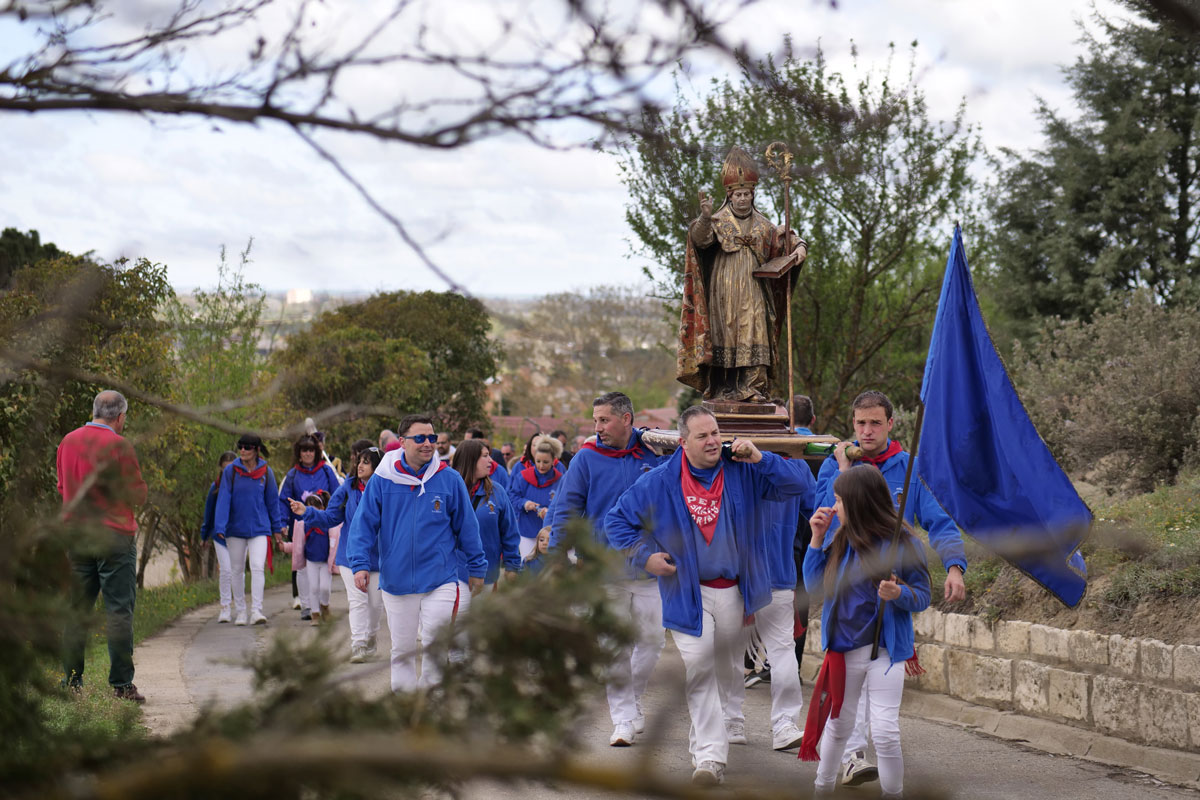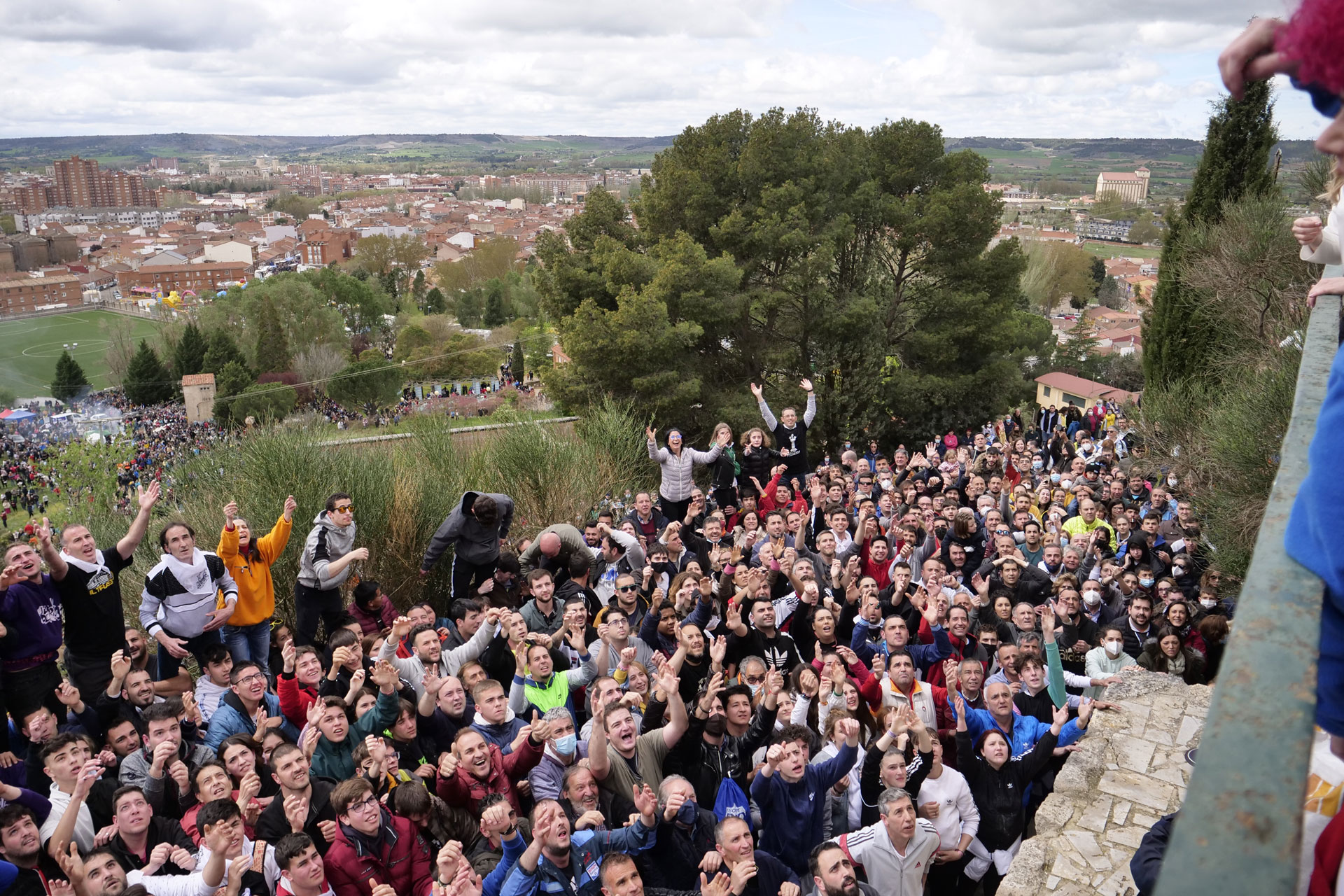The
cele
bration
The
cele
bration
A ritual to experience
at least once in your life
The people of Palencia, who care deeply for their roots and customs, have worked for centuries to protect the essence of this unique celebration of the St. Turibius pilgrimage.
The artistic expressions and oral transmission of the legend have evolved over the centuries, gradually establishing the story surrounding the festivities. A ritual you have to experience and enjoy at least once in your life. A ritual to experience at least once in your life
A celebration…
legendary
The seeds of this celebration, like many others, can be found in legend. And, although it isn’t certain that St. Turibius was stoned for fighting Priscillianism in the city, we do know that the events took place on the Otero knoll and that, in divine retribution, the Carrión River burst its banks in Palencia.
Damages, stones and miracles, but also the hard work of a city over all these centuries, have turned the St. Turibius pilgrimage into a one-of-a-kind celebration in Spain, with nearly 8,000 people gathering at the feet of the Otero Christ each year.
This pilgrimage is held on the Sunday closest to 16 April, the feast day of St. Turibius of Astorga.
A celebration…
religious and secular
The devotion of the people of Palencia and the continuation of the ‘village vow’ have been the foundation of this event. A celebration that started out honouring the saint and asking him to keep the people safe from disasters, bring rain and protect the city.
In the early 18th century, between 1708 and 1715, the prayer to St. Turibius fell on hard times due to the frictions between the Council and the Canonry. After several meetings, they reached an agreement that the secular expenses, most notably the bread and cheese given to the pilgrims and poor, would be covered by the City and the religious ones, for worship and the hermitage, by the Canonry.
After residents protested in May 1976 regarding the poor conditions in the neighbourhood around the Otero Christ, the Cathedral Canonry decided to change the route of the prayer and procession, which ever since has begun at the Church of St. Ignatius and St. Agnes, and designated a representative of the Canonry to say mass, which also continues to this day.
A celebration…
of social changes
The 19th century was a difficult time. In June 1856, there were food riots in Palencia and other cities of Castile. Hunger and social tensions led many grist mills to be attacked and burnt. A revolt that ended up with two women being garrotted and nine men, executed. Meanwhile, famine, illness and unemployment continued to plague society.
Three factors that brought new changes to the festivities. While bread and cheese had previously been handed out to the poor, in these years it became a true ‘stoning’, with the provisions thrown down from the hermitage balcony. And, with this parallel to the legend of St. Turibius, the people were able to uphold the saint’s reputation, who at that time had little to give out to so many poor people and pilgrims waiting at the hermitage doors.
A celebration…
fun and spectacular
The turn of the century and factors like the arrival of rail connections brought an economic boom to the city and, along with it, new changes in the celebration. While bread and cheese had previously been handed out to the poor, in these years it became a true ‘stoning’, with the provisions thrown down from the hermitage balcony. This paralleled the legend of St. Turibius in all its splendour. This was the start of the celebration as we know it today: full of fun, noise and spectacle.
A celebration…
that looks up to the sky
Will there be rain on our parade?
In line with the custom
of this year
of sending us weather
both sad and sullen.
Without an end to
the cold, hard rains
that fall at least
every three days,
today as we must
go to Otero,
the weather is more like
a day in January.
Because the unpredictable weather this time of year has always been a headache for the pilgrimage organisers.
An event that, although tied to 16 April, doesn’t have a set date and has historically required consensus among secular and religious authorities to ensure it doesn’t coincide with Easter.



